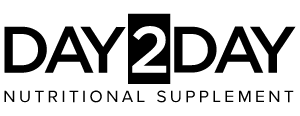
Collagen; It is a structural protein molecule consisting of certain amino acid sequences called glycine, proline, hydroxyproline, alanine, glutamine. It is the main protein in the connective tissues and accounts for 30% of all proteins.
Approximately;
75% on the skin,
85% tendon,
90% bone (organic bone mass) the rest is found in blood vessels and internal organs.
80% of muscle tendons are mass, 75% of skin and 90% of eye flux are collagen.
Collagen is a type of protein produced by Fibroblasts called connective tissue cells in our body. However, as we get older, the production in our body slows down. With the ages of 30, collagen production decreases 1-2% every year and losses begin.
A healthy and youthful skin is directly proportional to the high level of collagen. Our skin, the largest organ of our body, consists of 3 layers:
1-Epidermis
2-Dermis
3-Hypodermis
Collagen and elastin fibers are found in the dermis layer. With the loss of collagen; The amount of hyaluronic acid in the dermis layer of the skin decreases, the skin begins to dry and becomes vulnerable to sunlight.
Age is not the only factor that slows down collagen production. And also;
• Oxidative stress damage caused by free radicals
• High blood sugar due to processed sugar consumption
• Smoking and alcohol consumption
• Vitamin C deficiency that should be taken regularly
• Not to adequately protect the skin barrier against environmental factors
• Intensive use of cosmetics
• Sleep disorders
• Increasing cortisol due to mental and physical stress can rapidly deplete our body’s collagen stores.
HOW MANY COLLAGENES ARE?
There are 28 types of collagen in our body. Approximately 80-90% of the collagen in our body is type I, II or III collagen. The fibrillar structure of each type of collagen is generally the same. They are compact triple helix and carry three long chains of amino acids. However, there are important differences at the molecular level between collagen types.
Type I Collagen: Found in skin, bone, teeth, tendons, ligaments.
Type II Collagen: Found in bone and cartilage tissue.
Type III Collagen: It is found in the gastrointestinal tract, vascular system and skin.
HOW CAN WE REDUCE THE LOSS OF COLLAGEN?
Although we can not completely stop the collagen loss, it is in our hands to prevent its reduction. So what measures should we take?
• Eating foods rich in Vitamin A (tomato, spinach, broccoli, grapefruit, leek, carrot, apricot.)
• Eating foods rich in Vitamin C (citrus fruits, blueberries, strawberries, kiwi, melon, parsley…)
• Drinking plenty of water
• Not to lose the amount of amino acids and protein to be taken daily (fish, meat products, milk, yogurt and cheese, nuts, eggs and legumes…)
• Consuming red vegetables and fruits (such as beets, apples and cherries) Paying attention to sleep patterns
• Avoiding smoking, alcohol consumption
WHAT IS COLLAGEN PEPTITE?
The structure formed by amino acids by connecting with each other with peptide bonds is called protein.
As a result of controlled breakdown of collagen by specific enzymes such as “Collagenase”, amino acids are formed with the help of collagen peptides, proteases released from the pancreas and small intestine. The Gamma Glutamil Cycle, GLUTATYON, is very important for the absorption of amino acids.
